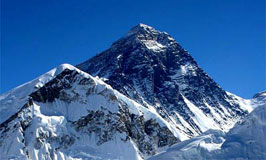NEPAL TOURS
Nepal
When to Go and Wheather

Nepal is broadly temperate, with four main seasons centred around the summer monsoon. The majority of visitors, prioritizing mountain visibility, come in the autumn peak season (late Sept to late Nov), when the weather is clear and dry, and neither too cold in the high country nor too hot in the Terai. With the pollution and dust (and many bugs) washed away by the monsoon rains, the mountains are at their most visible, making this an excellent time for trekking. Two major festivals, Dasain and Tihaar, also fall during this period. The downside is that the tourist quarters and trekking trails are heaving, prices are higher and it may be hard to find a decent room.
Winter (Dec & Jan) is mostly clear and stable. It never snows in Kathmandu, but mornings can be dank and chilly there – and in trekking areas, the fierce cold can make lodge-owners shut up shop altogether. This is an excellent time to visit the Terai, and if you can face the cold, a rare time to be in the mountains too.
Spring (Feb to mid-April) is the second tourist season, with its warmer weather and longer days. Rhododendrons are in bloom in the hills towards the end of this period, and as the Terai’s long grasses have been cut, spring is the best time for viewing wildlife – despite the increasing heat. The downsides are that haze can obscure the mountains from lower elevations (though it’s usually possible to trek above it) and stomach bugs are more common.
The pre-monsoon (mid-April to early June) brings ever more stifling heat, afternoon clouds, rain showers – and more stomach upsets. It also brings edginess: this is the classic time for popular unrest and illness. Trek high, where the temperatures are more tolerable.
Nepalis welcome the monsoon, the timing of which may vary by a few weeks every year, but typically begins in mid-June and peters out in the last weeks of September. The fields come alive with rushing water and green shoots, and this can be a fascinating time to visit, when Nepal is at its most Nepali: the air is clean, flowers are in bloom, butterflies are everywhere and fresh fruit and vegetables are particularly abundant. But there are also drawbacks: mountain views are rare, leeches come out in force along the mid-elevation trekking routes, roads and paths may be blocked by landslides, and flights may be cancelled.



